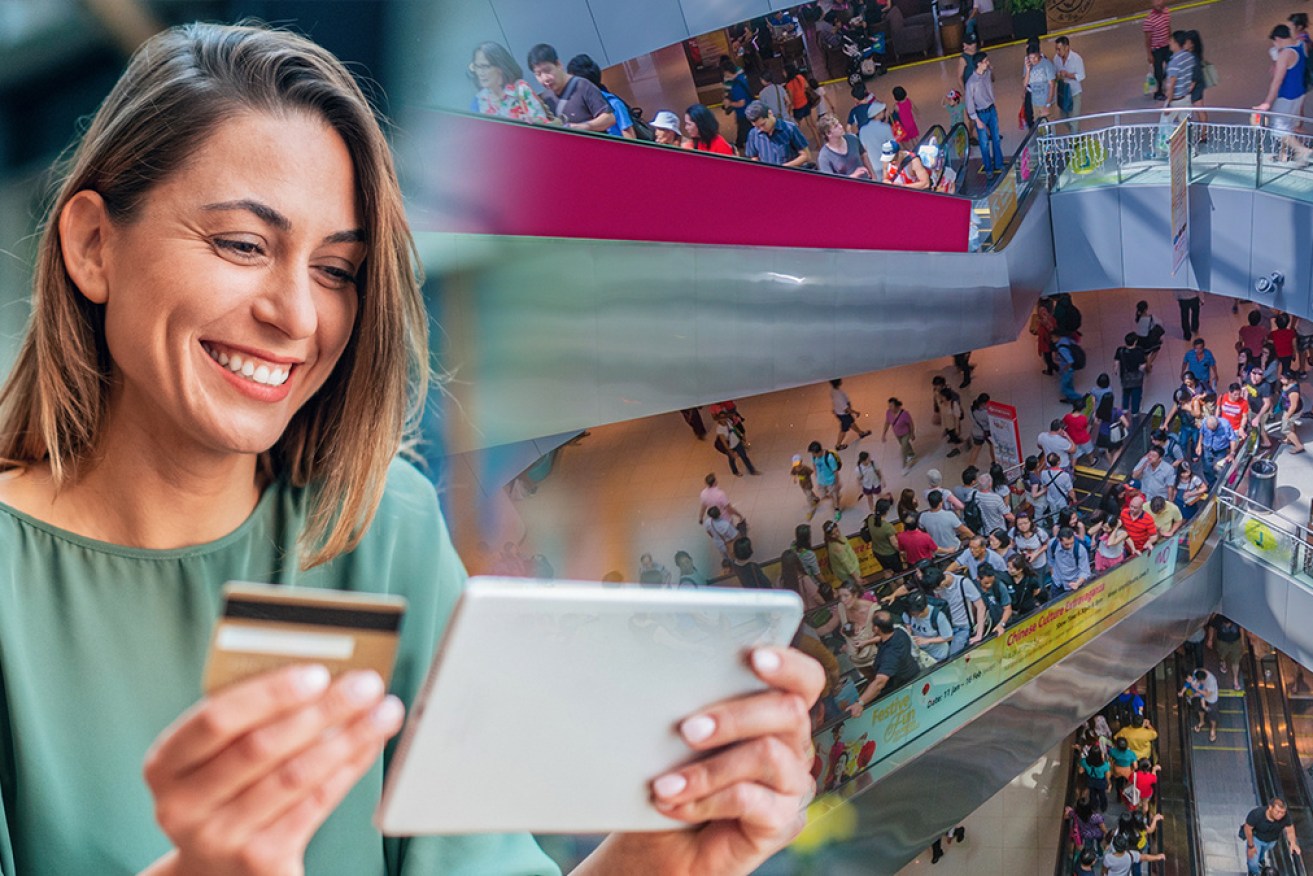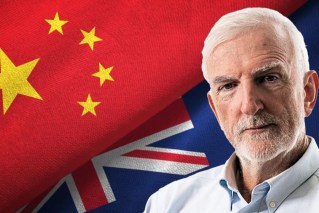Retail in 2021: The three ways we’ll shop in the future

Retail shopping complexes may never fully recover from coronavirus. Photo: TND
2020 might as well be retitled the Year of Disruption. Just about everything has changed for consumers this year – the way we buy, where we buy, what we buy, and when we buy. Yet where there is disruption, there is opportunity. In order to meet consumers changing behaviours, retailers have had to pivot to the ‘new normal’ of online shopping investing in digital architecture, deploying innovative delivery options, and adopting touchless, frictionless payment systems. It has led to more digital transformation than the entire last decade combined.
So what does 2021 hold in store for retail?
Offline is online and online is offline
More Aussies than ever are shopping online. Online shopping growth is up 75 per cent year on year and the convenience of kerbside delivery, click and collect and buy now pay later has been a key ingredient to its success. A third of Australians plan to increase their shopping online in the coming months and 32 per cent indicate that they will continue to shop online for the next 12 months. Our love of online is set to stay.
But it’s not all just about clicks. The retail landscape of 2021 will be omnichannel and seamless blending online and in-store shopping. Retailers are leveraging the strengths of their in-store experience, and the consumers’ desire for an engaging, immersive, tactile shopping experience. But they are merging this with a convenient, slick and frictionless online experience. In 2021 it will be no longer relevant to talk about online versus in-store as two separate shopping channels. hybrid business models are popping up offering shoppers an experience journey where the physical store is no longer the consumers final destination, it is just one step along the way.

Associate Professor Jana Bowden tells us how we’ll be shopping for the next 12 months.
Shopping is no longer binary. It’s not as simple as “if I want to buy item X, I have to go to store Y.” The covid induced multi-channel shopper revolution means that consumers will now visit a pop-up, a boutique and say, a department store. Then they’ll jump on to their device to shop up a storm. Laptops will be most popular with 54 per cent of Aussies browsing on them, but the ease of mobile shopping means it is also on the rise from 39 per cent this year. Shoppable posts and shopping apps are also on the rise – 62 per cent of Aussies use a shopping app each month according to We are Social. This hybrid shopping experience means that consumers are experiencing these brands across multiple platforms and at every moment of their day.
Social commerce evolution or revolution?
The pandemic has been a boon for retailers on social. Aussies now have an average of 6.7 social media accounts each, and 96 per cent of Australians visited or used a social network or messaging service in the past month. YouTube, Facebook, Instagram, Twitch, TikTok, Pinterest and Spotify are platforms that are leading the way and we are collectively hooked on content. Our media consumption has doubled and we now average 6 hours and 59 minutes online each day. That’s a staggering 40 per cent of our waking life. The sky really is the limit in terms of targeting consumer eyeballs on social in 2021.

Just scroll, and shop – welcome to the Instagram retail space. Photo: Instagram
Consumers are craving exclusive, personalised shopping experiences via social media to build purchasing intent. They want curated edits, personal content and a human-touch. The indisputable trend of shoppable posts, concierge services, instant 24/7 chat access to sales staff and livestreamed support will continue. The online social inspiration phase is a critical piece of the customer journey which is focused on finding inspiration or inspiring others in social media. Research has found that more than 70 per cent of Gen Z’s globally make their purchase decision during this shopping stage.
The use of AI and extended reality to enhance the shopper experience will increase. And it pays. Retailers have introduced mobile based virtual try-ons for apparel and accessories. Consumers in 2021 can now virtually try-on their new shoes without leaving their living room. Forbes reported that consumers will spend 48 per cent more when their shopping experience is personalised. Even high-end fashion retail labels are in on the act clothing gaming avatars in high- end ‘skins’ and swapping runway launches for video games. If you can’t afford the real-thing, 2021 will offer you the digital ephemeral version. Gen Z are hooked flocking to post their new avatar outfits for fellow social gamers to see, even if they’re virtual.
It’s a brave new retail world but the retailers that get it right in 2021 will be omnipresent connecting consumers across their retail ecosystem and being where they are when they are there.
Dead or alive? Hyperlocal will trend
Retail precinct footfall was in decline pre-covid, falling 8.1 percent between 2017-2020. But despite the massive shift to online, physical retail is not about to disappear – it’s simply transforming.
Australians still love the tactile, experiential and immersive in-store shopping experience. Covid has brought with it a renaissance focused on a greater sense of community spirit. Consumers have rallied around local retailers increasing their support for small businesses offering personalised service and unique product. The key to success for small retailers is harnessing consumers’ sense of belonging and identification with their locals. Mastercard reported that 73 per cent of consumers wanted to shop local to help their community get back on its feet and 42 per cent of consumers said they would spend more to do so. The average spend on local businesses is now $200 per week. The covid-induced buy local, shop local movement will continue into 2021 in line with the increasing “in this together” consumer sentiment that we have seen this year.
Authentic retail and the rise of sustainability
In 2021 shoppers will be more conscious, ethical, sustainable and mindful as a result of covid. There’s a greater awareness of retail with purpose and authenticity and trust will be key. Gen Z in particular are looking beyond the physical products that are sold and they are looking to the retailers’ purpose – its value set. Value is no longer a simple trade-off between price and quality. It’s multidimensional. Covid has really hit the reset button on societal values, and consumers now want to shop with retailers that reflect their societal, cultural, economic and political values. Savvy retailers in 2021 will have a finger on the social movement and consumer sentiment pulse and be proactive, not reactive when it comes to reflecting what consumers want.

Shoppers are thinking more about where their money goes, and they want to see it count – we’re choosing to spend more at small businesses. Photo: Getty
Re-commerce and the circular economy are also on the rise. The value of Australia’s re-commerce economy has boomed and is now $46 million this year (double on the past decade) and half of all Aussies are buying second hand to get bang for their buck and make the dollars go further. That’s around $5000 of unwanted clothes, accessories, and household goods for every household in Australia. With the economic impact of Covid continuing and with the removal of stimulus schemes, consumers are going to be more budget-conscious than ever.
Re-commerce offers a sustainable alternative whilst making the dollar go farther. In fact, more consumers than ever before are donating pre-loved and 2021 will see this boom – 42 per cent of Aussies planning to sell their own items in the future. For socially aware consumers the idea of reducing waste, conserving resources, giving back to society and saving money is a winning combination. On top of that re-commerce allows consumers to connect with one another, have conversations, socialise and buy/sell and in a year of social dislocation, isolation and lockdown – and that in itself will be a huge benefit in 2021.
Dr Jana Bowden is associate professor and chair of ethics at Macquarie Business school, specialising in marketing and consumer behaviour








